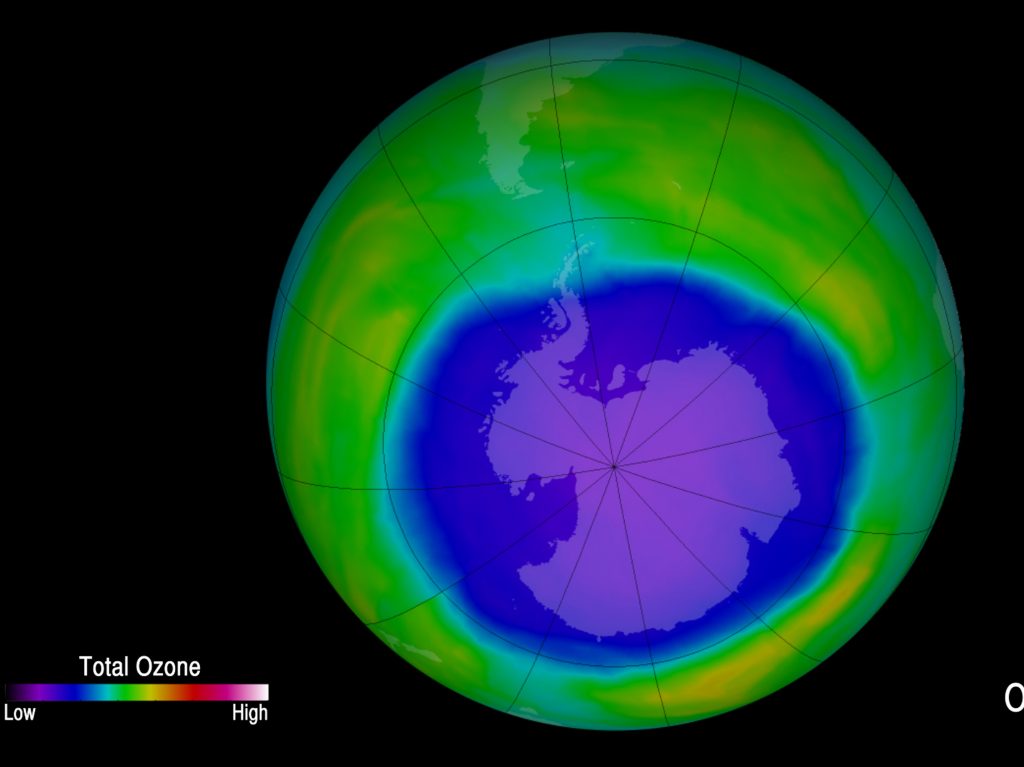News
Banned, Ozone-Depleting Chemical Is Still Being Produced Somewhere, Scientists Say
By: Camila Domonoske | NPR
Posted on:
Someone appears to be producing a banned ozone-depleting chemical, interfering with the recovery of Earth’s damaged ozone layer, according to a newly published study led by scientists with the National Oceanic and Atmospheric Administration.
The illicit emissions are believed to be coming from somewhere in eastern Asia, but otherwise, nothing is known about the offender. It’s a scientific whodunit — or rather, a who’s-doin-it.

In the study, published in Nature on Wednesday, the scientists say atmospheric level of trichlorofluoromethane, or CFC-11, is still dropping overall. But it’s not declining as quickly as it should be.
“It appears that emissions of CFC-11 have increased in recent years, which is quite a surprise given the fact that production has been phased out — reportedly,” Montzka says.
CFCs, or chlorofluorocarbons, “were once widely used in the manufacture of aerosol sprays, as blowing agents for foams and packing materials, as solvents, and as refrigerants,” according to a news release.
But scientists realized the chemicals were harming the ozone layer, which filters out harmful UV rays that can increase the risk of skin cancer (and, if left unchecked, would interfere with agriculture and ecosystems). So in the late 1980s, the world agreed to phase out the use of the chemicals, including CFC-11.
Some CFC-11 still exists in insulation and older appliances, according to the researchers. But new production was supposed to have stopped as of 2010. That means the amount of CFC-11 in the atmosphere should be declining more and more each year, allowing the ozone layer to replenish.
But the rate of reduction is slowing, which doesn’t fit with expectations. The scientists analyzed measurements from 12 different sites and concluded that CFC-11 emissions started to increase after 2012, two years after production of the chemical was reportedly at zero.
Their data indicate the source is north of the equator and probably in eastern Asia.
Montzka says it’s possible the production is accidental, but it also might be the result of an intentional violation of the Montreal Protocol.
Either way, it’s bad news for the ozone layer. CFC-11 is the second-most abundant ozone-depleting substance in the atmosphere, and reducing levels is essential for the ozone layer to recover.
The next step for atmospheric researchers is to try to narrow down the source of the emissions, with help from scientists across eastern Asia, Montzka says.
The U.N.’s Ozone Secretariat says that it is “critical” to “identify the causes of these emissions and take necessary action.”
“It is important to note that these findings also highlight the efficacy of the Montreal Protocol, its institutions and mechanisms, with science at their core,” the secretariat says. “So long as scientists remain vigilant, new production or emission of ozone depleting chemicals will not go unnoticed.”
Noticing the problem is not the same as fixing it, however.
The Montreal Protocol has been a remarkably effective agreement. But David Victor, a professor of international relations at the University of California, San Diego, says there’s no easy way for the international community to crack down on violations.
If a country is willfully violating the protocol, “there’s an enforcement mechanism, but it doesn’t really have any teeth,” Victor tells NPR. “You can file reports, threaten trade sanctions. … At the end of the day, if a country is really committed to violating an agreement they can probably do that.”
Another likely scenario is that a government wants to enforce the ban but lacks the enforcement capacity to crack down on illegal production. That’s been an issue with the Montreal Protocol before.
“As CFCs have been regulated out, the value of them on the black market has gone up,” Victor explains. “It’s not too different from running a drugs business.”
In that case, other countries can offer technical assistance, but “it’s very hard for an outside country to go in …. and engage in enforcement activities,” Victor says.
9(MDI4ODU1ODA1MDE0ODA3MTMyMDY2MTJiNQ000))

